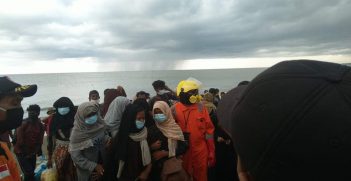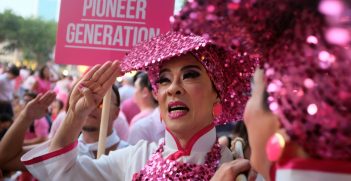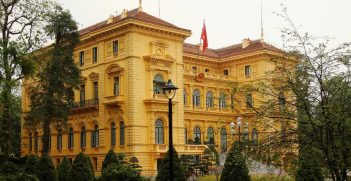Laos’ Megawatt Ambitions: Energising Regional Geopolitics

The Laos government has an investment plan that will aid national development and contribute to a broader green energy revolution in Southeast Asia. High debt levels and the promise of ecological destruction along the Mekong has raised concerns, and may prove prohibitive without careful engagement and regional backing.
Landlocked in the heartland of mainland Southeast Asia, Laos’ has embarked on a grand vision to become the “Battery of Southeast Asia,” ensuring economic independence and providing the region with green energy. By leveraging its prime location along the Mekong to build hydropower dams, and exporting electricity to its neighbours, the government hopes to generate significant revenue to address its economic challenges, while shoring up regional energy security. To this end, Vientiane must walk a fine line between the demands of Chinese state-owned enterprises, who have bankrolled its projects, and potential pushback from its neighbors, who rely on a freely flowing Mekong, to achieve its vision.
Laos’ economic situation
The governing Lao People’s Revolutionary Party (LPRP) derives its legitimacy by upholding socialism as a long-term goal while enacting economic reforms to address underdevelopment. Economic growth strengthens the regime’s legitimacy by demonstrating that socialism can coexist with a market economy to enhance living standards and national prosperity.
While the country has achieved a comparatively high annual GDP growth rate compared to the region, it has regressed since 2019. Laos is still underdeveloped, with a 2024 GDP per capita of AU$2,937, ranking 8th regionally on the Human Development Index (HDI). Laos’ development is hindered by its landlocked borders, reliance on imports, hyperinflation, debt, and low workforce skills. More recently, protracted macroeconomic instability has subdued the Laotian economy to below pre-COVID-19 levels. The economic hardships felt by the people have led to protests, most recently in 2023, challenging the LPRP’s legitimacy.
The Battery of Southeast Asia plan envisions Laos as the renewable energy hub for mainland Southeast Asia by building hydroelectric dams along the Mekong River. With electricity exports valued at AU$16.8 billion in 2023, and with the country expected to generate around 20,000 megawatts by 2030 for export, hydropower promises the government substantial revenue.
Southeast Asia’s energy problem
Southeast Asia has an energy problem, with 83 percent of the region’s energy coming from fossil fuels. Due to population and economic growth, regional energy demands are projected to triple by 2050. Southeast Asia remains a net importer of fossil fuels and struggles with meeting renewable energy targets due to unequal distribution of regional energy resources, limited capacity in some countries to achieve green energy goals, and slow progress on climate commitments.
The heavy reliance on fuel imports poses risks to energy security, particularly during crises like the Covid-19 pandemic, a deepening geopolitical conflict, or global financial disruption. The disruption of global value chains due to the War in Ukraine and the Red Sea attacks by Houthi rebels, moreover, have shown the vulnerability of continued fuel imports.
A key project that could address regional energy problems is the ASEAN Power Grid (APG), aimed at promoting regional renewable energy integration. The first successful APG project, launched in 2022, is the Lao PDR-Thailand-Malaysia-Singapore Power Integration Project (LTMS-PIP). It has facilitated a 100 megawatts of cross-border power trade from Laos to Singapore via Thailand and Malaysia, with Phase II commencing in September 2024, seeking to double capacity. For Laos, the APG has immense potential to turn it into a regional energy hub, generating new revenue, jobs, and local industry.
Geopolitics of the Battery of Southeast Asia
Since 2012, Laos has been building multiple dams along the Mekong, with plans to construct 80 further hydroelectric dams. However, this has raised concerns about the long-term financial sustainability of the projects and ecological impacts, in addition to growing Chinese influence.
Laos lags in infrastructure development and lacks the capacity to fund many of its projects. According to the Lowy Institute, more than half of Laos’ official development finance is geared towards energy projects, especially hydropower projects, which is more than double the regional share. Of this, 64.8 percent of Laos’ debt is owed to China, totalling AU$74.4 billion. Opaque governance has hindered Laos’ ability to reach international lenders like the International Monetary Fund, forcing Vientiane to look to Beijing for financial support. Despite some debt deferrals from China, Laos remains in a liquidity crisis, with concerns over long-term solvency.
Additionally, the construction of dams in Laos has caused biodiversity loss, food insecurity, flooding, and forced relocations, impacting both Laotians and downstream riparian communities. This is a concern for Laos’ close political ally, Vietnam. The Mekong Delta contributes to one-third of its GDP. Expanding dam projects could strain the relationship, especially as Vietnam sees China’s growing influence in Laos as a threat to its strategic interests.
Meanwhile, China’s large-scale investments under the Belt and Road Initiative (BRI) have raised geopolitical concerns about Laos’ growing dependency on Beijing, with accusations of “debt-trap diplomacy.” To alleviate its debt, Laos has given the joint-venture Électricité du Laos Transmission Company Ltd., which the Chinese state-owned China Southern Power Grid Company owns a majority share, a 25-year concession agreement giving it the rights to build and manage its power grid, including electricity exports rights. While some blame China, others point to Laos’ overborrowing with high-interest loans. While fears of Chinese interference in domestic affairs exist, others see Laos’ engagement with China as a strategic move to balance larger neighbours like Vietnam and Thailand.
While the Battery of Southeast Asia vision could boost Laos’ economy and assist regional energy security and climate goals, these abovementioned concerns may hinder the realisation of Laos’ ambitions.
Beijing’s influence may strain Vientiane’s relations with Hanoi or even Bangkok, and ecological concerns from neighbouring countries such as Cambodia, Thailand, and Vietnam may lead them to collectively push for a halt in dam construction to mitigate environmental impacts.
In light of these challenges, the economic benefits may not outweigh the long-term financial and environmental costs for Laos in its pursuit of becoming a regional energy hub.
Hoang Anh Q. Nguyen is an Intern at La Trobe Asia, where he contributes to La Trobe University’s efforts to engage with Asia. He has previously held positions at the Young Professionals in Foreign Policy (YPFP)—Tokyo, the ASEAN Centre for Energy, the United Nations Development Programme (UNDP), and the United States Embassy in Hanoi.
This review is published under a Creative Commons License and may be republished with attribution.





